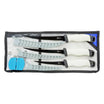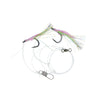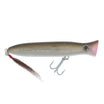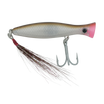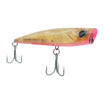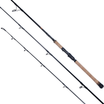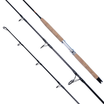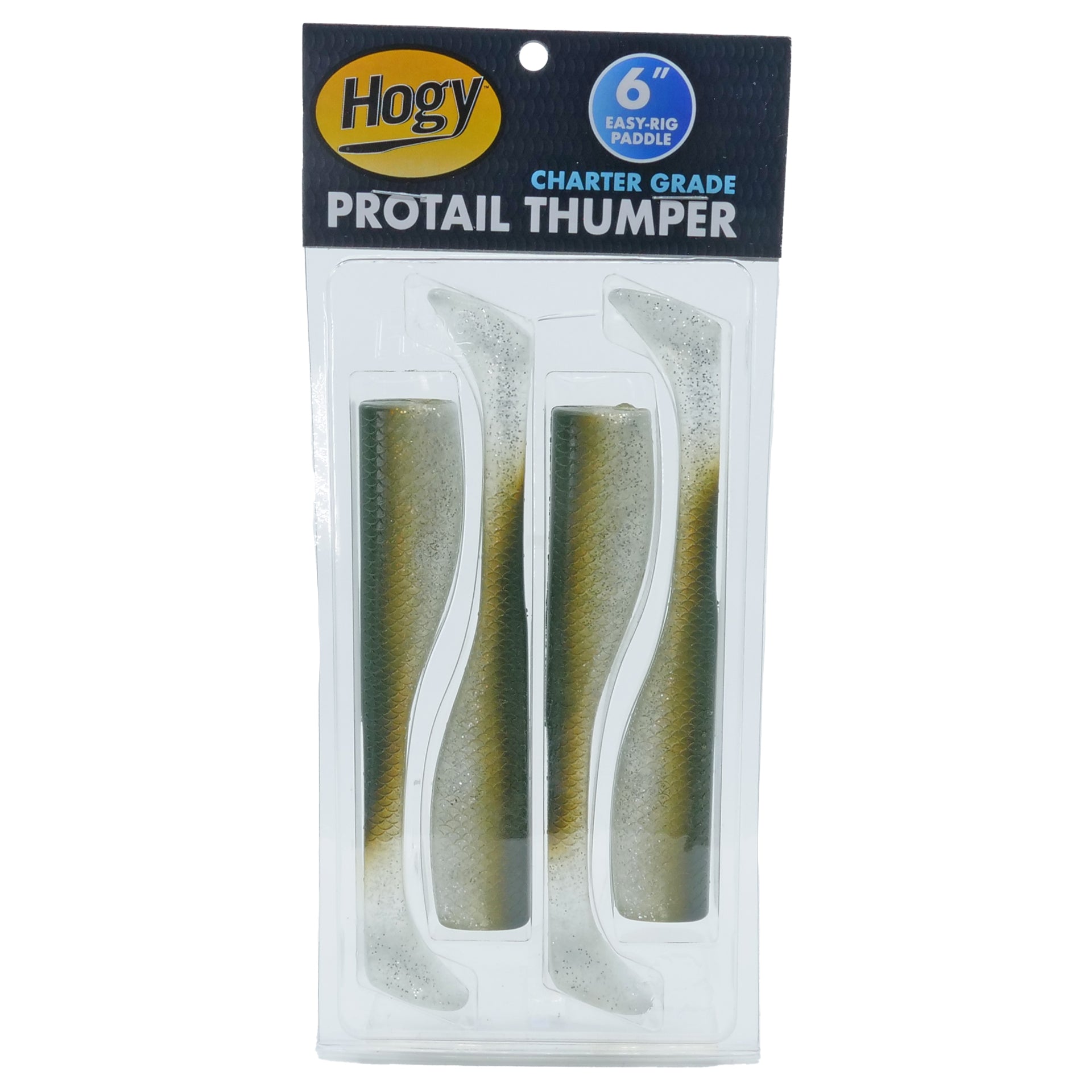Tarpon Fishing Bridges
I’ve probably spent as much time fishing under and around bridges as I’ve spent fishing all other locations combined. These man-made structures offer all the luxuries tarpon enjoy. Ambush points, current, access to deep water and of course an endless supply of forage. They are certainly one of the easiest areas to find and target tarpon, along with a wide variety of species, but also offer a complex set of challenges for consistent success.
Methods: Bridge fishing is a traditional and iconic method for targeting tarpon along the Florida Keys. An endless expanse of concrete and steel dot the horizon all the way to Key West. Practically every bridge along the way will have tarpon of some size living nearby. Generally speaking, the smaller and shallower the bridges will harbor populations of Juveniles feeding on small shrimp and glass minnows, while the expansive spans of the middle and lower keys tend to attract the largest populations of adult tarpon feeding on crabs, mullet, pilchards and eels flushed out from the shallows.
Daytime Approach: For sake of discussion, I’ll use the Bahia Honda bridge system as my example for daytime tarpon around bridges. If you’re not familiar, the Bahia Honda Channel is a prime example of deep water and fast current. This gap allows water to pass from the Atlantic to Gulf waters and the current velocity can be tremendous. Tarpon gather here for several months, taking advantage of the tidal forage buffet that opens every 6 hours. While many guides and rec anglers prefer to use live baits such as crabs and mullet, heavily weighted Black HDUV Eels presentations fished deep in the water column along the back eddies have a been not so secret weapon for well over a decade.

Location Breakdown: You’ll find fish holding in three primary areas along the bridge structure and channel. Each has a specific method for the best chances of success.
Up Tide Staging Along Bridge: It’s common to see small scattered groups of tarpon sliding alongside the up-tide shadow line of the bridge. These fish are expending a lot of energy to hold their positions and may move between spot 1 and spot 2 during a tide. These quickly cruising fish can be a challenge to present, too.
The current is often very fast, quickly sweeping your lure into structure and snags. The best method I’ve found to target these groups is to anchor or stem the tide with a trolling motor 25 to 30 yards ahead of the bridge piling the fish are hanging around. I’ll then make a short 10-yard cast behind the boat using a 2oz or 3oz Barbarian Jig & 9-inch Black HDUV Eel.
With my fingers, I’ll feather out slack, allowing the jig to hit bottom. The current will quickly pick up the jig, so you’ll want to get a couple short rod tip twitches in to work the bait. As the bait rises back up in the current, pay out another bit of controlled slack until the jig hits bottom and repeat the jigging motion until the jig is presented alongside the bridge piling. I’ve found if a fish is going to eat this presentation, it’s usually within 10 yards of the piling, just after giving the lure a few twitches along the bottom.
Down Tide Back Eddies: Located in current breaks downside of bridge pilings, these tarpon generally hang in a tight area for a duration of the tide. This is a classic feeding zone in a low energy output area and often the most productive area to fish. If current is light, stem the tide between two pilings using a trolling motor. If you don’t have one or the current is too strong, you’ll want to moor up to one of the pilings using a quick release rope system. Ideally you’ll want to be able to cast across the back eddy, close to the back of the piling. This will allow your bait to swing with the current, subsurface and into the feeding zone. If boat traffic or anchor position make that difficult, you’ll want to use a similar back dropping technique as described in spot 1.
Open Channel Away From Structure: There’s a very good chance you’ll be seeing quite a bit of commotion with fish breaking well past the current breaks and structure of the bridge. These fish may be more interested in daisy-chaining with their pals and can be difficult to track in open water and fast current. I’ve found fish holding in the shallower portions of the main channel to have a much higher tendency to feed. So, if possible, head toward the channel edge as it shallows up and work groups of rolling fish in that area. Lightly weighted 10-inch and 7-inch Originals swung with the tide can be very effective. For sub-surface presentations a 2oz or 3oz Pro Tail Paddle cast across tide and retrieved at a steady pace can provide results.
After-Hours Approach: Please exercise safety when fishing at night for tarpon. Water conditions near bridges can change and deteriorate rapidly and extra caution should be used before heading out after dark. That said, night fishing around bridges is arguably one of the easiest and most reliable ways of capturing a tarpon. During early summer months, when migratory tarpon populations are peaking, it’s worth hitting the water just after dark. While the sunset bite can be very productive, there is usually an hour just after dark that is pretty quiet. During this time, predatory fish like the tarpon need some time to allow their eyes to adjust to the change in ambient light. This period appears to be a transition period for tarpon to move in and congregate around the bridges. During the day, these groups of fish are feeding along nearby beaches, passes and flats. At night they move in around the bridge structure to begin the night feeding.
Why Bridges At Night? An entire ocean’s food chain unfolds before your eyes with a rolling tide. Small shrimp, crabs and baitfish are swept out from nearby grass flats. Some of these small crustaceans are looking to spawn, while others are simply helpless against the heavy current. This nightly bait flush is just like a protein-packed buffet bar for tarpon. A seemingly endless supply of potential forage is sent through the lights like a conveyer belt.
Two Bridge Scenarios: There’s generally two styles of bridges, those with overhead roadway lights and/or channel marker lighting and completely unlit bridges. Both lit and unlit bridges can be very productive, but you’ll find that fish tend to hold in different areas depending on ambient light sources.

Lit Bridges: Overhead lights along the bridges roadway will cast shadow lines below along the water surface. These shadow lines become staging and ambush points for tarpon to feed on nearby forage. Generally speaking, baitfish will try their best to stay in well-lit areas, usually schooled up tightly to try and survive the tide. For the most part, tarpon will be just down tide of these bait schools, holding just inside the shadow line darkness looking for an easy opportunity to feed. Staging points are generally both up and down tide of bridge pilings and fender systems; on a given bridge you may find that fish feed up tide more actively while the current is mild to moderate, then move toward slack water and eddies down tide of bridge pilings as the current increases.
Two Methods For Fishing Lit Bridges: These two methods are a great starting point for targeting tarpon holding along bridges with shadow lines.
Baitfish will almost always stage on the lit side of a shadow line, often on both the up tide and down tide side of the bridge. You can look for bait swimming near the surface, or use your electronics to find concentrations along the bridge. Depending on location and tide, bait can stack up in the shallows, or along the center of a bridge, near the navigation channel fender system. Generally, tarpon will be staging near the greatest bait concentrations, so focusing your angling effort in these areas is a great way to maximize your time ROI.
Staging Up Tide: This is a great method when fishing bridges with mild to moderate current. I’ll use my trolling motor to stem the tide and position my boat just up tide of the light line. Using trolling motor features like spot lock can be very helpful to keep you in position. Once in position, I”ll make long casts parallel to the light line and allow my bait to swim back just inside the dark side of the shadow line. 90% of the tarpon will be waiting in ambush in this area and presenting a bait is pretty simple.
My go-to presentation is a large swim bait and I prefer the 8-inch HDUV Paddle on a 1oz or 2oz Barbarian Jig Head, or a Pro Tail Paddle, 2oz or 3oz in Black or Bone. Using a slow to medium speed steady retrieve is a great method for swimming in this feeding zone.
Staging Down Tide: When current is at maximum velocity, staging down tide is often the only viable option for safely fishing near the bridge structure. Position your boat along the back eddies formed from the pilings. There will be significantly less current for you to manage, and it will allow for a good casting angle. Present your lures by casting through the bridge, toward the up tide shadow line. You’ll swim your lure through the entire feeding zone, which is the dark area behind the shadow line, under the bridge itself and back into the down tide shadow line. Tarpon will often be hanging in these dark areas, waiting to feed. I find spending some time to listen and watch for surface rolls, splashes, or feeding is the best way to figure out where to begin fishing. If you don’t see any surface activity, begin fishing areas with the biggest concentrations of bait fish. Tarpon shouldn’t be too far away.
Fishing unlit bridges is very common throughout the Florida Keys and can be just as effective as fishing lit bridges. They can be a little daunting to navigate, so make sure to spend some time scouting during daylight hours to get familiar with your surroundings. On a moving tide, tarpon should give their location away pretty quickly if you listen for the loud splashing of fish feeding near the surface.
Working The Darkness: Unlike lit bridges, baitfish don’t have the security of lit areas to concentrate and hide. So, you’ll often find that bait is trying to hold around structure that breaks up the current. Look for the best activity around back eddies formed down tide from bridge columns. Use your fish finder to locate concentrations of bait, you’ll often mark tarpon while idling around as well.

Use the same lure presentations: 8-inch HDUV Paddles and 2oz to 3oz Pro Tail Paddles in Black or Silver. Make sure to swing your baits naturally with the tide while working these current breaks, imparting very little unnatural movement. On occasion, the channel and fender system will have lights marking a tide gauge. This little area of illumination can concentrate bait and become a feeding zone as well. I prefer setting up parallel to the lit area about a cast length away, then swim my lure with the current into the outside edges of the shadow line cast from the light. Tarpon will stage all around the dark edges and can also been seen rolling in the lit area feeding as well.




















